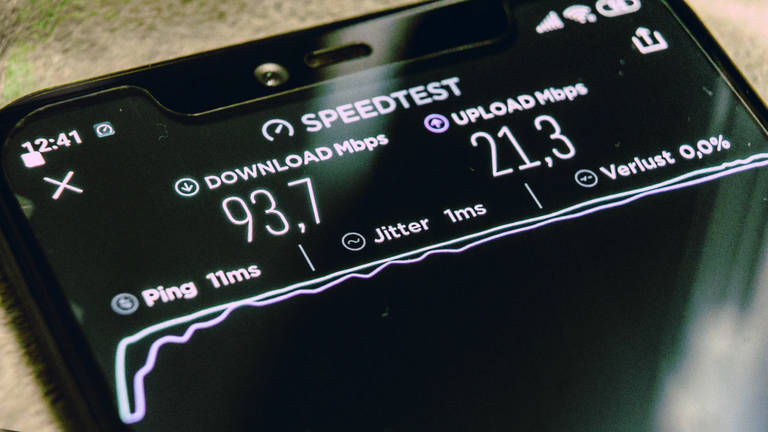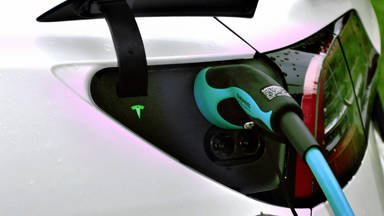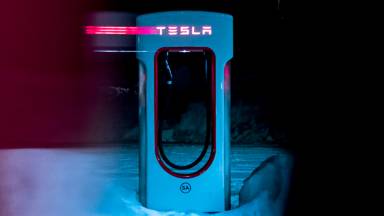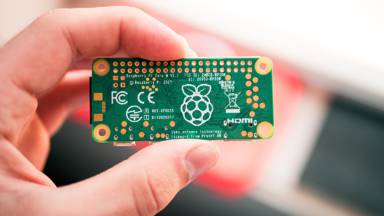
Perhaps you've heard all the crazy theories about 5G weakening the immune system causing cancer or a global epidemic. Let's look at what 5G is, how it works, and some of 5G's applications.
We are going to explain interesting bits about the science of data transmission and how the ability to transmit data over the air has evolved over the past four years.
These cables can convey a lot of information and are the backbone of the Internet. However, we cannot connect all devices to them because many devices require a wireless connection. Cellular networks must be built to enable wireless data transmission, and it all started in 1979 with the first generation of mobile networks in Japan, which we now call 1G.
The radio wave frequencies used by these constellations are close to the electromagnetic spectrum and only transmit data analogously. Let's see how to use carrier frequency to transmit analog data.
For example, suppose we want to transmit a sample sound wave, which is a simple 100 Hz sine wave. If we want to apply it to a high frequency wave of 850 MHz, we can use amplitude modulation or frequency modulation.
AM and FM
You must have heard these terms about radio stations.
AM applies the data to the amplitude of the transmitted frequency so that the carrier frequency range changes exactly to follow the main wave with its peaks and valleys.
FM applies the data to the carrier frequency as follows: To follow the main wave, it changes the distance between the peak points. To redirect calls using this method, you need a dedicated frequency band that is determined by the lowest and highest frequencies used. If another user uses this frequency band in the same tower, another frequency band must be used.
As the number of users increases, the system capabilities has to expand further.
Increasing the frequency is an option to increase the bandwidth, but increasing the frequency is difficult. Frequency needs to be licensed and there is a lot of competition.
In order to acquire new frequency bands, companies often have to go to auctions and buy licenses with huge capital. Any new generation of mobile networks can do this.
However, much work has been done over the years to carry more information on a frequency band. Increasing the number of users who can use the same frequency band can simply increase the number of towers.
Instead of using a high-powered tower for the whole city, you can use several low-energy towers. The frequency band can then be assigned to each client in the area of each tower without creating a similar frequency band in neighboring cells. This increases the number of users the network can support, but does not increase data performance.
At its best, 1G can withstand speeds of up to 2.4 kbps, but its description in bits per second is a bit unnatural because it is analog.
Bit is the unit of digital data. 2G introduces a fully digital system and ushers in a new era of mobile phones. Instead of encoding the analog signal in the frequency band, we encrypted the binary data. If you're like me, this is the first time you've used a mobile network.
Using this technology of course you can have calls, but digital data provides a new way to communicate. This is the time when a new language was born. Text speak.
The SMS 160-character text contains 1120 bits. Simply 160 x 7-bit characters. When 2G was first introduced, it could reach around 9.6 kbps. Such bandwidth can handle 1120-bit text messages without any problems. However, the second-generation period lasted until the release of the first iPhone, and speeds increased to 200 kbps due to improved Internet protocols such as General Packet Switched Radio (or GPRS which is sometimes called 2.5G).
When the iPhone 2 was released, 3G became a hot topic. 3G has launched more frequency bands and it is estimated that the company has raised more than $ 100 billion through auctions in Europe to achieve the new range. However, 3G has also changed the system, making full use of the packet switching method used by GPRS.
In 3G, the data is divided into small packets. Each package contains a header with the destination address and information on how to create the package. By dividing the data into smaller blocks, the available frequency range can be better used.
Instead of trying to find a wide gap available in a frequency band, it is better to split the data into smaller pieces and send it through many different frequency bands. It's like sending a lot of truck data on a single road and sending thousands of motorcycle messengers to a congested road. This enables us to use the frequency band capacity more efficiently and transmit more data.
Over time, these protocols have been improved to make more efficient use of bandwidth. In 2005, fast access to HSPA packages (you might call it H+ on the phone) was introduced, and the speed increased to 42 Mbps. This is known as 3.5G.
4G is introducing a new technology called Long Term Evolution (LTE) that offers more frequency bands, such as the 700 MHz frequency band previously used for analog television broadcasting. There is also a new way to compress more data in existing frequency bands through orthogonal frequency division multiplexing (OFDM). With OFDM we can send more data.
You may be familiar with the concepts of constructive and destructive interference. When two waves meet, they can merge, amplify or cancel each other. To prevent such signals, they must be separated over time to prevent interference. However, OFDM allows the signals to be compressed and distorted to send the same data in a shorter time.
High frequency wave propagation is not good.
It is blocked by almost anything, including rain, and acts like visible light. If you do not see the source, you can no longer receive it. To solve this problem, network providers need to install a large number of transmitters.
The study estimates that for a load speed of 100 Mbps to reach 72% of the population and 1 Gbps to reach 55% of the US population, approximately 13 million 28 GHz base stations are available to the public. It costs 400 billion dollars to be installed. If there are several base stations, the congestion of a single frequency band is reduced. However, 5G also uses a technology called massive-MIMO (massive multiple input multiple output).
This is basically just a series of antennas in the same frequency band for listening and transmitting. This can cause interference, but 5G also tries to use beamforming(or spatial filtering) technology that allows the antenna to be aiming at your phone instead of sending a signal in all directions.
The fact that high-frequency waves can carry more data means that 5G in the United States is reaching speeds of 1,800 Mbps. Higher frequencies can contain more information because we encode the information as oscillation periods.
190 MHz means 190 million wave cycles per second. Because we encode information as wavelengths, we can encode more information than high-frequency waves. So far we have used frequencies between 700 MHz and 2500 MHz. So 700 million wave cycles per second to 2.5 billion wave cycles per second. However, 5G hopes to be able to use frequencies up to 90 GHz. This is 90 billion wave cycles per second.
This is huge for time-sensitive technologies (such as self-driving cars), and these technologies require fast communication between vehicles on the network and allow more devices to connect to the network.
5G has great potential, and it is not dangerous. The electromagnetic spectrum begins with gamma radiation, which starts at very high frequencies and short wavelengths. Higher frequencies and shorter wavelengths mean higher energy; In fact, gamma rays cause cancer.
What you need to worry about here is ionizing radiation. That means it can remove electrons and damage things like DNA, but 5G is moving to lower energy frequencies. Like visible light and microwaves, the long-range rays of these wavelengths can cause heating with high enough powered beams. This is the only real credible concern we can find on 5G.
As mentioned earlier, these frequencies are blocked by rain, so they certainly can not penetrate your skin. Hence, these transmitters have no energy to produce harmful heat. It's just a little energy and a lot of research shows that it is harmless.
If you are worried about 5G this way, it is better to worry about street lights because these higher frequencies emit energy. Unless you remove these layers from the first iterations and realize that they are nothing more than years of problem solving. Although each generation creates more complexity, this technology seems more magical every day.









